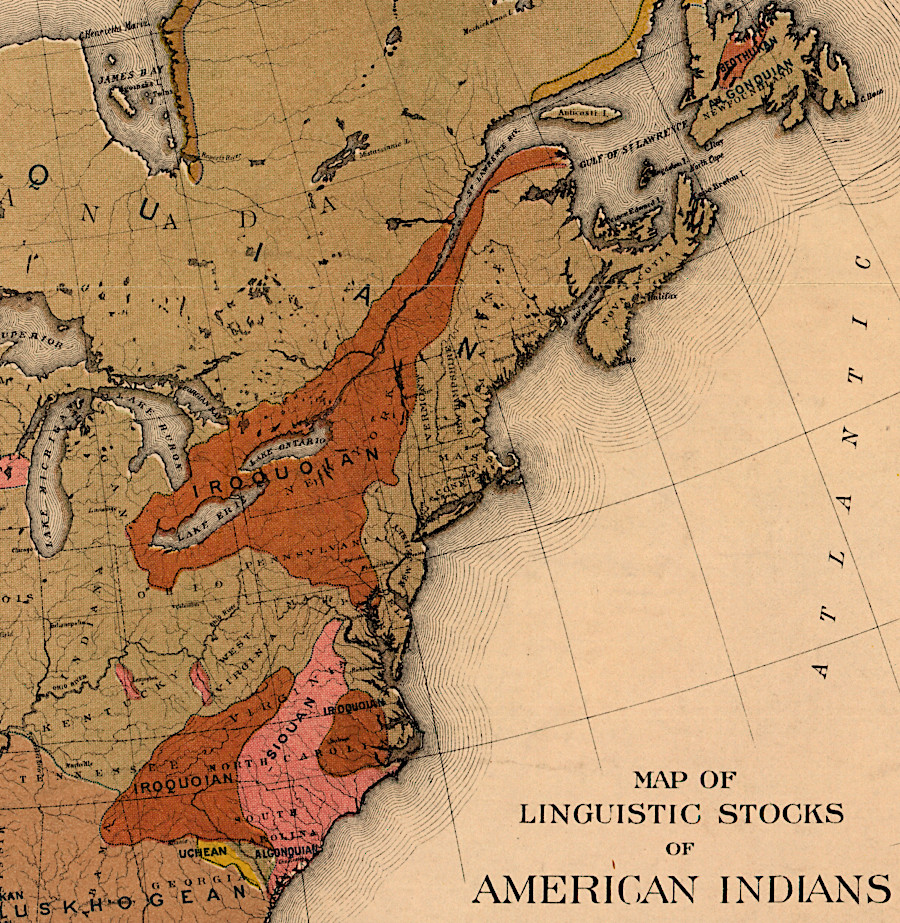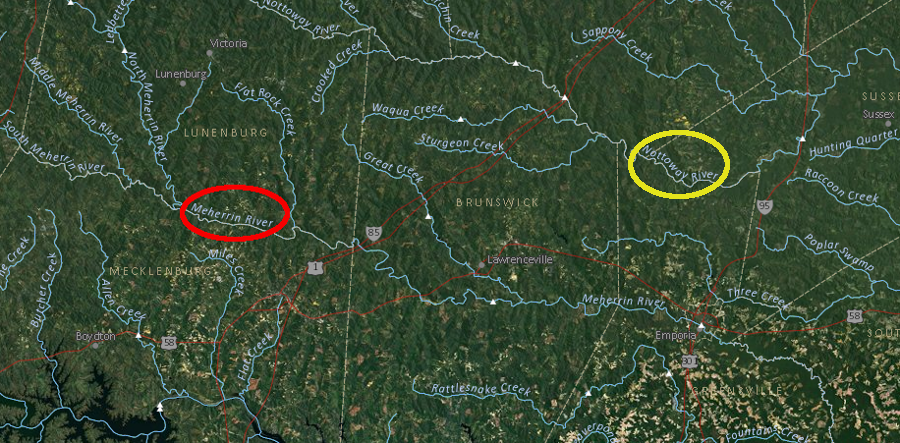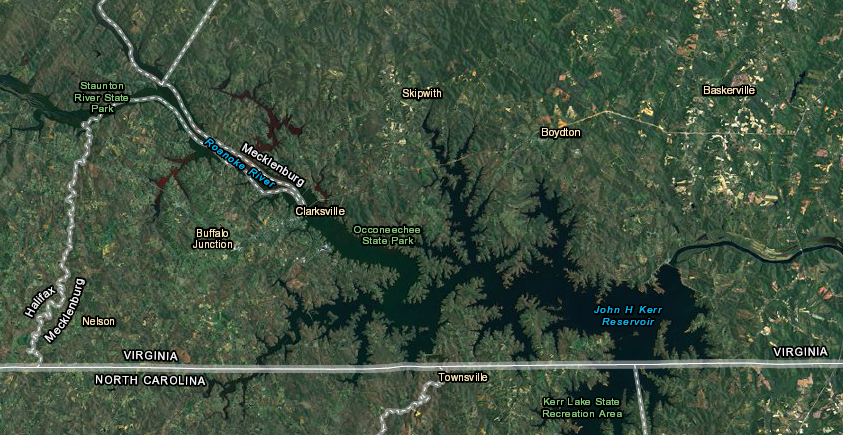Iroquoian-Speaking Native Americans in Virginia

separated from the Haudenosaunee near the St. Lawrence River, the Meherrin, Nottoway, and Cherokee in Virginia spoke languages belonging to the Iroquoian linguistic group
Source: Library of Congress, Map of linguistic stocks of American Indians (by John Wesley Powell, 1890)
Native American nations speaking languages belonging to the Iroquoian linguistic group lived in separate areas at the start of European colonization. In what became southeastern Virginia and northeastern Carolina, the Meherrin, Nottoway, and Tuscarora tribes were part of that linguistic family. The Meherrin and Nottoway rivers still bear their name, flowing through territory they controlled when English colonists arrived. The Cherokee living in what became southwestern Virginia also shared that language.

Source: US Geological Survey, National Atlas Streamer
The Meherrin and Nottoway occupied lands north of the Tuscarora, who occupied a portion of the Coastal Plain in what became North Carolina. Other Iroquoian-speaking tribes lived to the north, including the Susquehannock and the five tribes in the Iroquois Confederacy, but the Meherrin and Nottoway were separated from them by other groups that spoke Algonquian or Siouan languages. The Cherokee to the west also spoke an Iroquoian language, but they too were physically isolated by Siouan-speaking tribes on the Piedmont.
The five Iroquois tribes in New York, from the Mohawks on the east to the Seneca on the west, formed a powerful confederacy. It deterred English expansion west of the seacoast, and those tribes threatened their Native American neighbors to the south.
The northern tribes would send hunters on long expeditions south into the Virginia Piedmont in the fall, where deer, turkeys, and other game were more plentiful than in the tribes' local area. The hunters on these expeditions were not committed to peace with the Virginian colonists, and often these "raids" created alarm among the English settlers on the frontier.
The Cherokee who occupied southwestern Virginia also spoke an Iroquoian-based language. Their first contact with Europeans may have been in 1540, when Hernando de Soto crossed the Blue Ridge after marching up from Florida. Juan Pardo brought more Spanish warriors to the Blue Ridge in 1567, and it is possible that they crossed the future boundary line of Virginia and attacked a Native American town where Saltville later developed.
It is unclear what language was spoken by the Native Americans in the town where Pardo placed troops for a winter, or in the town they attacked. Communications between those Spanish explorers and the local residents must have involved a great deal of sign language and gestures. Misunderstandings and miscommunications must have been common.
Virginia traders doing business with Iroquoian-speaking tribes focused initially on the Susquehannock. William Claiborne established a fur-trading business based on Kent Island. He was displaced by the Calverts after the colony of Maryland was established. The Maryland and Pennsylvania proprietors sought to keep the fur trade of the Susquehannock within their colonies. Later, colonial officials in New York successfully maneuvered with the Iroquois Confederacy to dominate the Susquehannock and direct much of their trade to Albany.
For Virginia traders, the other nearby Iroquoian-speaking tribes were the Meherrin and Nottoway. Not far south were the Tuscarora. They had few skins to trade, and the new colony of North Carolina was established before Virginia traders developed strong relations with the people living in the Chowan River watershed.
Trade with the far-away Cherokee started with expeditions from Fort Henry (Petersburg) sponsored by Abraham Wood. He sent James Needham and Gabriel Arthur to Chota, an Overhill Town on the Little Tennessee River, in 1673. Though Arthur survived and returned with Cherokee to start trade, South Carolinians based in Charles Town out-competed the Virginians.
In the French and Indian War, Virginia officials recruited Cherokee warriors to assist in the attack on Fort Duquesne. The Cherokee were not compensated as promised, and the warriors were not favorably impressed by the slow advance of British and colonial forces. On their return home, Virginia colonists attacked and killed some of the Cherokee, and the tribe allied with the French. The military response obliterated many of the Cherokee towns. Many members of the tribe moved down the Tennessee River, making it even harder to carry furs to Virginia.

Occoneechee State Park, east of Clarksville on Buggs Island Lake (Kerr Reservoir)
Source: US Fish and Wildlife Service, Wetlands Mapper
Links
"Indians" of Virginia
Virginia Places


